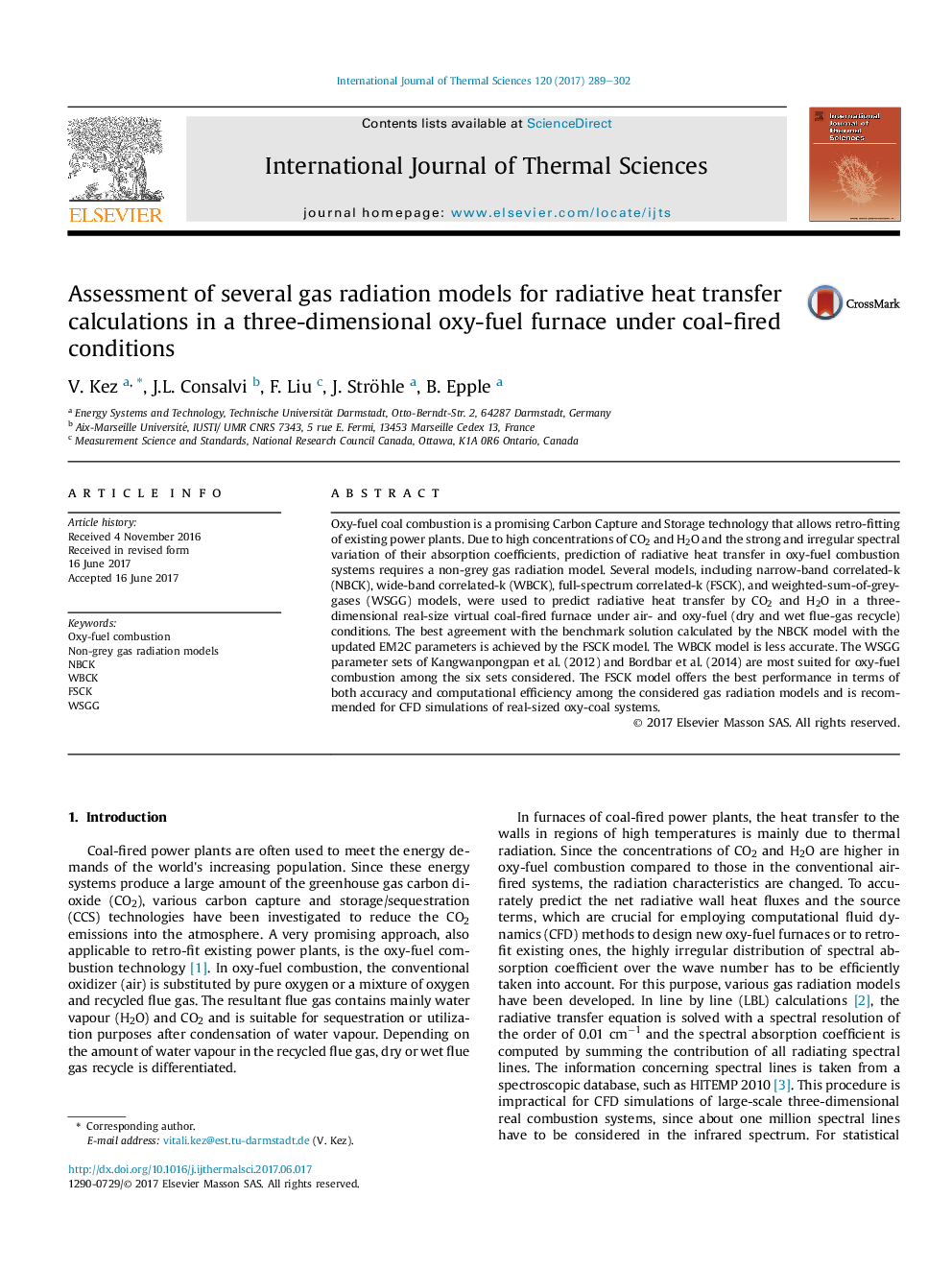| Article ID | Journal | Published Year | Pages | File Type |
|---|---|---|---|---|
| 4995238 | International Journal of Thermal Sciences | 2017 | 14 Pages |
Abstract
Oxy-fuel coal combustion is a promising Carbon Capture and Storage technology that allows retro-fitting of existing power plants. Due to high concentrations of CO2 and H2O and the strong and irregular spectral variation of their absorption coefficients, prediction of radiative heat transfer in oxy-fuel combustion systems requires a non-grey gas radiation model. Several models, including narrow-band correlated-k (NBCK), wide-band correlated-k (WBCK), full-spectrum correlated-k (FSCK), and weighted-sum-of-grey-gases (WSGG) models, were used to predict radiative heat transfer by CO2 and H2O in a three-dimensional real-size virtual coal-fired furnace under air- and oxy-fuel (dry and wet flue-gas recycle) conditions. The best agreement with the benchmark solution calculated by the NBCK model with the updated EM2C parameters is achieved by the FSCK model. The WBCK model is less accurate. The WSGG parameter sets of Kangwanpongpan et al. (2012) and Bordbar et al. (2014) are most suited for oxy-fuel combustion among the six sets considered. The FSCK model offers the best performance in terms of both accuracy and computational efficiency among the considered gas radiation models and is recommended for CFD simulations of real-sized oxy-coal systems.
Keywords
Related Topics
Physical Sciences and Engineering
Chemical Engineering
Fluid Flow and Transfer Processes
Authors
V. Kez, J.L. Consalvi, F. Liu, J. Ströhle, B. Epple,
